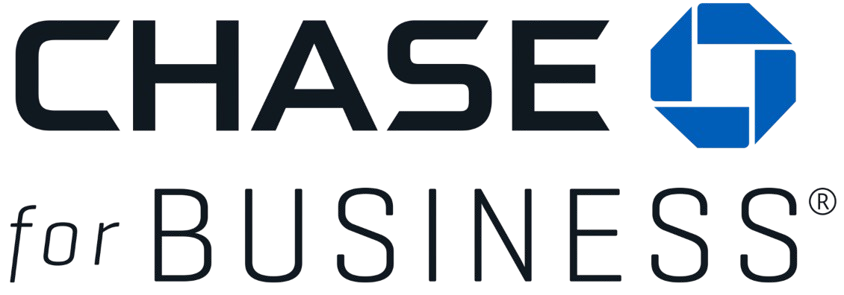A chargeback is a reversal of a payment card transaction initiated by a card issuer because of a dispute filed by the payer or customer. Chargebacks can have a significant impact on a small business’ revenue and sustainability but are necessary to ensure consumer protection. Some of the usual reasons for chargebacks include unauthorized transactions, dissatisfaction with a product or service, billing issues, and non-delivery of product.
Flexible payment processing for any business |

|
Key takeaways:
- Chargebacks safeguard customer interests but can impact a small business’ revenue and reputation.
- Minimize their impact with a strong chargeback management strategy, including
- Preventive measures
- Diligent documentation
- Employee training
- Chargeback protection tools
How Do Chargebacks Work?
Before a chargeback is filed, the customer sometimes contacts the merchant to inquire about the transaction or ask for a refund. In some cases, the issue is resolved between the merchant and the customer, either by a refund issued by the merchant or with the customer accepting the transaction as valid.
If the merchant and the customer do not resolve the issue, the customer could then start the chargeback process.
In a card payment processing transaction, the issuer is the bank that issued the customer’s debit or credit card, and the acquirer is the merchant’s bank. After the customer has filed the chargeback, the issuer may already decide to resolve the chargeback in favor of the customer. This usually happens when the customer has provided sufficient information to support their claims, such as when the card has been stolen.
If a chargeback is won by the customer, the transaction amount (along with any chargeback fees) is deducted from the merchant’s account. The original transaction amount is paid back to the customer’s card. If the chargeback is rejected (meaning the merchant wins the chargeback), then the transaction is considered valid, and funds remain with the merchant.
Common Reasons for Chargebacks
There are many possible reasons a merchant may receive a chargeback. Here are some of the most common:
- Unauthorized transactions: When a customer’s card information is stolen or compromised and used for a transaction with your business, the customer may initiate a chargeback. In this case, the customer is not the one who used the card to make the transaction, but someone else using the customer’s card details.
- Customer dissatisfaction: Customers might resort to chargebacks when they’re dissatisfied with the quality of a product or service they received. If a customer feels that the merchant did not deliver as promised, they might initiate a chargeback rather than seek a refund directly from the merchant.
- Non-delivery of product: If a customer does not receive the product they ordered, the customer may think that the merchant did not fulfill their order. Even if the item was sent, it might have gotten lost due to issues with shipping, inventory management, or communication breakdowns.
- Misleading product descriptions: If the product received by the customer doesn’t match the description provided by the merchant, the customer may dispute the charge. Misleading or inaccurate product information can lead to chargebacks based on customers’ expectations not being met.
- Billing issues: Discrepancies in billing, such as incorrect amounts charged or double billing, can prompt customers to initiate chargebacks to correct the billing errors. This can be a more common concern for international transactions.
- Non-cancellation of subscription: If the customer has canceled a subscription or recurring payment but continues to be charged for it, the customer usually files a chargeback.
- Technical issues: Payment processing errors or technical glitches can result in duplicate charges, overcharges, or incomplete transactions. If not addressed in a timely manner, customers may seek chargebacks to rectify the issues.
- Refund delays: If a customer has requested a refund and doesn’t receive it within the expected timeframe, they might resort to a chargeback to expedite the process.
What is friendly fraud? Also known as chargeback fraud, this is when a customer initiates a chargeback on a valid transaction. These chargebacks are illegitimate, and the customer is technically defrauding the merchant.
Why Should Small Businesses Care About Chargebacks?
Besides direct revenue loss, most providers impose a fee for every chargeback. There is also the possibility of being categorized as a high-risk merchant, as most payment processors monitor merchants’ chargeback ratios and will categorize a merchant as high-risk if it receives more than 100 chargebacks in a month or the chargeback ratio is higher than 1%.
When this happens, the merchant may have its account paused or suspended, get fined, or be imposed with a higher mandatory reserve or payment processing fees. In some cases, the merchant may need to look for a different merchant account provider that accepts high-risk businesses.
According to a report, the average chargeback rate is 0.60%, which means that 6 out of 1,000 transactions is a chargeback.
Chargeback Fees
As we mentioned, merchants often need to pay chargeback fees when a customer initiates a chargeback on a transaction. These fees are typically imposed by payment processors, acquiring banks, and card networks as part of the chargeback process, and usually range from $15 to $35 per transaction.
The chargeback fee is used to cover the administrative and operational expenses associated with managing and resolving chargeback disputes. This means that when merchants receive and lose a chargeback, not only will they fail to retain the amount paid for the transaction, but they will also need to pay a chargeback fee.
The amount of the chargeback fee depends on the payment processor and the card network. There are some payment processors that do not charge chargeback fees if the merchant wins the dispute, and instead have to pass on chargeback fees imposed by the banks.
Here are some examples of what chargebacks look like with leading payment processors:
Provider | Chargeback Fee | Learn more |
|---|---|---|
 | Waived for up to $250 per month | |
 | $15 per chargeback | |
 | $25 per chargeback | |
 | $15 per chargeback lost (no fee for chargebacks won) | |
 | $25 to $100 per transaction depending on dispute volume |
Chargeback Management
Chargeback management is the process of effectively handling and mitigating chargebacks to minimize their impact on business operations, finances, and reputation. The ideal way to manage chargebacks involves more than just dealing with chargebacks as they occur; it should consist of preventive measures, prompt responses, evidence gathering, and customer communication.
Preventive Measures
It is important to have business practices in place that will help prevent chargebacks.
- Clear policies: Ensure that product descriptions, terms of sale, and refund policies are accurate, transparent, and easily accessible to customers.
- Customer support: Provide responsive customer support to address concerns, answer questions, and resolve disputes before they escalate to chargebacks.
- Strong authentication: Implement multi-factor authentication and address verification systems to reduce the likelihood of unauthorized transactions.
- Fraud detection: Use fraud prevention tools and algorithms to identify potentially fraudulent transactions before they occur.
- Secure payment processing: When processing card payments, make sure to use secure payment gateways and encryption to protect customer data and prevent data breaches.
Learn more in our guide on how to prevent chargebacks.
Prompt Response
When a chargeback is initiated despite the preventive measures in place, it is important to respond promptly and within the designated time frame provided by the payment processors. Design your own business process for handling chargebacks as they come. This may include assigning a person in charge of dealing with all the chargebacks and a step-by-step procedure for responding to the chargeback notification.
Evidence Gathering
If you think a transaction is a valid one, then winning the chargeback relies heavily on whether you can prove it. Make sure to have business practices in place to have proper documentation of transactions. Compile and organize compelling evidence that supports the legitimacy of the transaction. Some documents that will be helpful are order confirmation emails, tracking numbers, delivery confirmations, and customer communications.
Communication
Whether chargebacks are issues for your business or not, having open lines of communication with your customer will improve your business relations. When a customer files a chargeback, engage in constructive dialogue to understand the reason for it and attempt to resolve the issue amicably. Maintain communication with the customer to update them on the status of the chargeback dispute.
Dispute Resolution
Put effort and attention into responding when you receive a dispute on a transaction. Craft a well-structured and factual response to the chargeback with the relevant evidence you’ve compiled. Clearly explain why the transaction is valid and the steps taken to meet the customer’s expectations.
Every payment processor has their own dispute resolution procedures. Submit your response according to your provider’s established dispute resolution process.
Learn more in our guide on how to win a chargeback.
Chargeback Management Software
Utilize chargeback management software that can streamline the process, track chargeback statuses, and provide insights into your chargeback trends and causes. Many of these software implement machine learning algorithms to identify patterns and anomalies that might indicate potential chargeback risks.
Looking for software or service to help you manage your chargebacks? Check out our guide on the best chargeback protection services.
Employee Training
Train staff to handle customer interactions, refunds, and disputes effectively and professionally. All employees should be educated about chargeback prevention strategies and the importance of maintaining accurate records.
Chargeback Frequently Asked Questions (FAQs)
Expand the questions below to learn more about common concerns about chargebacks.
No, a chargeback is not the same as a refund. A chargeback is a dispute filed by the customer to reverse a transaction on their card for issues like fraud or dissatisfaction. A refund, on the other hand, is performed by the merchant for a returned or unsatisfactory product or service. In some cases, refund delays may lead the customer to file for a chargeback instead.
A customer may be qualified to file for a chargeback because of fraud, unauthorized use of their card, dissatisfaction with the product or service quality, non-receipt of goods or services, billing errors, or non-cancellation of subscriptions. The card issuer reviews the dispute, and if the customer’s claims are valid, then the issuer files a chargeback.
The merchant who processed the transaction has the responsibility for the chargeback. When a chargeback is initiated, the merchant is required to either accept the chargeback or respond with evidence if the merchant thinks that it should be a valid transaction. In the chargeback process, the burden of proof falls on the merchant. If the evidence is insufficient, the merchant is liable for the transaction amount and any potential fees.
Typical chargeback evidence may include order confirmation emails, proof of delivery, communication history with the customer, transaction records, and any other documents related to the transaction.
If a merchant does not respond to a chargeback, then the customer automatically wins the dispute. This means the merchant will lose the transaction amount and any chargeback fees, and the charge on the customer’s card will be reversed.
Bottom Line
A chargeback is an important mechanism that safeguards customer interests. However, for small businesses, it can have significant effects on revenues, operations, and reputation. Aside from losing money for products or services that have already been rendered, merchants may incur additional fees and increased exposure to being categorized as a high-risk merchant.
To mitigate the negative effects of chargebacks on small businesses, it is important to have proper chargeback management practices in place, such as observing preventive measures, resolving disputes promptly, gathering evidence diligently, and using a reliable chargeback protection service.